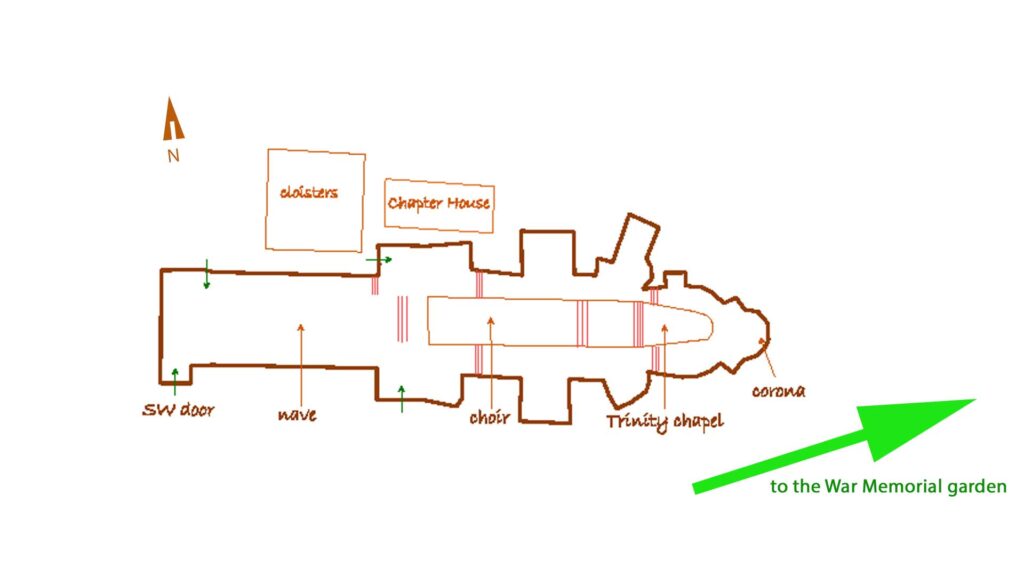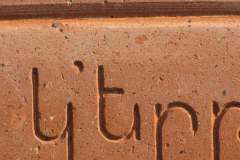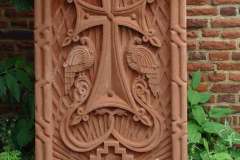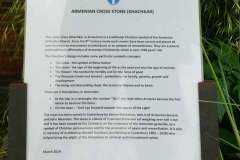In March 2019 an Armenian khachkar (‘cross stone’) was erected on the northern side of the Memorial Garden. The sculpture commemorates the Armenian genocide of 1914-1923. It is carved from a half tonne block and consists of a crucifix with traditional naturalistic motifs. The cathedral website tells us that “the design incorporates traditional Armenian liturgical symbology: there is a wheel of infinity, two peacocks and steps representing the ascent to heaven.” Above the head of the cross are the Armenian letters for the number ‘301’, the year in which Armenia made Christianity its official religion and staked its claim to becoming the first Christian nation. The Armenian inscription near the base reads: ‘And I go towards the source of the light’, a quote from Daniel Varoujan, an early twentieth century Armenian poet.
At first glance the cross appears to be made of brick; it is red in colour and contains numerous angular inclusions. On closer inspection it can be seen that we are dealing with a volcanic rock, known as a tuff. When volcanic material is released in an explosive volcanic eruption ash and larger clasts (called lapilli when >2mm and <64mm) fall to earth and form an unconsolidated tephra. If this material is welded together by intense heat the rock is called an ignimbrite. As the stone is described as relatively easy to carve the volcanic ash and clasts have not become truly welded, therefore a consolidated tuff is a more accurate description.
In Armenia, tuff has been used as a sculptural stone, a decorative stone and a building stone. The capital city Yerevan is known as the ‘Pink City’ after the profusion of buildings constructed from the local stone, a red-pink variety of tuff. The precise provenance of the Canterbury stone is unclear, although it is known the block was transported direct from the quarry in Armenia. There are active red tuff quarries in the vicinity of the capital city and also at Armavir to the south west of Yerevan where the stone is marketed as Hoktemberyan Tuff (the town was formerly named after the Russian uprising). The Canterbury sculpture was carved by John Meardon and Vartan Moskofian and is on long-term loan to the Dean and Chapter.




